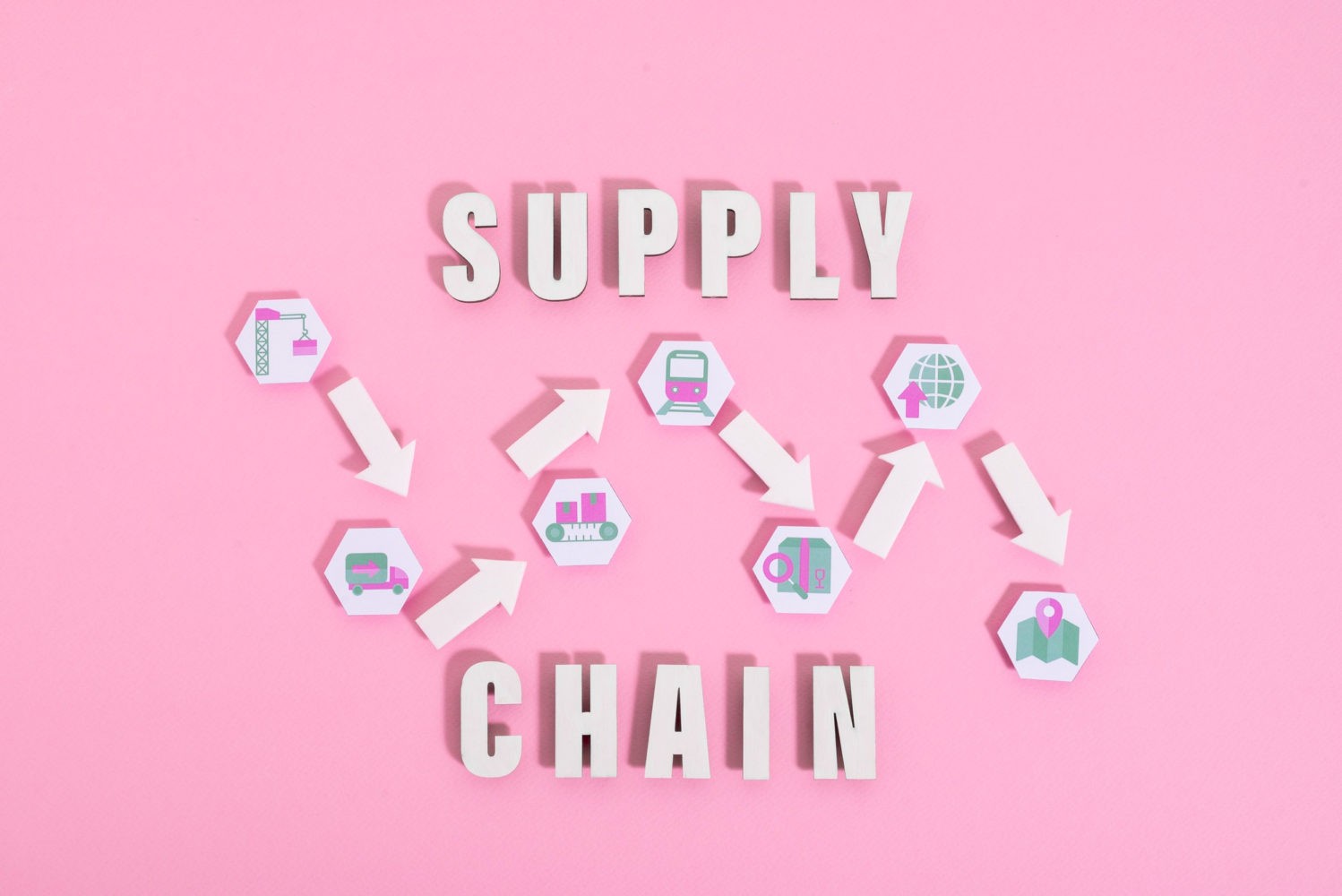In the supply chain industry, the disruptions of the past few years (just remember the Covid-19 outbreak and the pressure that the global logistics sector experienced) exposed the fragility of global logistics networks. It forced companies to rethink how they transport goods across borders and out of that shift, a new generation of companies has emerged. They are technology-driven and each is introducing smarter ways to manage freight, track shipments, and eliminate inefficiencies that have been plaguing supply chains for decades.
For professionals in logistics, project management, or business operations, understanding these companies is more than a trend exercise. It’s a career necessity. The future of global commerce will depend on leaders who understand digital supply chains, not just physical ones. Whether you’re pursuing a supply chain certification, a project management credential, or simply building operational expertise, studying these disruptors reveals how data, automation, and design thinking are reshaping logistics end to end.
The following seven companies represent the leading edge of that evolution. They’re not just making supply chains more efficient – they’re redefining how business moves globally.
1. Ship4WD
Ship4WD takes aim at a market that’s historically underserved: small and medium-sized businesses trying to move goods internationally. For decades, freight forwarding was dominated by large brokers with opaque processes, unpredictable pricing, and little support for small exporters. The Ship4wd freight forwarding service was built to fix that.
Freight forwarding without the friction
Ship4WD’s platform allows SMBs to quote, book, and manage international freight shipments online. Instead of navigating dozens of forms, calls, and intermediaries, users get transparent rates, digital documentation, and real-time shipment tracking – all from a single dashboard.
It feels more like booking a flight online than dealing with complicated freight logistics, and that’s by design. Ship4WD wants to make global trade accessible, giving smaller businesses the same level of clarity and control that big multinationals have.
Designed for small business agility
What differentiates Ship4WD is not just its technology, but its focus. The platform was built for business owners who aren’t logistics experts: entrepreneurs, startup founders, or operations managers juggling multiple priorities. Ship4WD handles the technical side of freight forwarding while maintaining visibility and control for the user.
It also provides 24/7 customer support and full shipment tracking from start to finish. By combining a human touch with digital transparency, Ship4WD bridges the gap between old-school freight brokers and modern logistics platforms.
The broader significance
From a professional perspective, Ship4WD represents a textbook example of user-centric innovation. The company studied the pain points of smaller businesses (complexity, lack of trust, and unpredictability) and engineered an experience that removes them. For professionals studying supply chain strategy, it’s a masterclass in identifying underserved markets and creating accessibility through digital design.
Why it matters for the modern professional
Understanding Ship4WD helps logistics and business professionals see how digital freight models can enable inclusivity in global trade. The ability to simplify complexity through digital processes will be one of the defining professional competencies in logistics and operations management over the next decade.
2. Flexport
When Flexport entered the market, the freight forwarding industry looked almost the same as it did 30 years earlier: email chains, manual invoices, and opaque pricing structures. Flexport saw the inefficiency and built a platform that digitized the entire logistics workflow – from booking and documentation to customs and delivery.
Digital freight, simplified
Flexport brings importers and exporters together through a global network of carriers and warehouses. Its cloud platform puts everything (location, cost, and compliance) into one easy-to-use dashboard. You can see your shipments in real time and spot patterns like which routes are most reliable or how long customs usually take.
The real disruption
Besides the obvious automation advantages, the disruption also involves the decision visibility. Traditional freight forwarders acted as middlemen, controlling information flow. Flexport flipped that model by putting real-time data directly in the hands of shippers. For the first time, businesses could track freight like they track website analytics: instantly, globally, and accurately.
Why it matters for the modern professional
For supply chain professionals, Flexport shows what happens when data, design, and logistics really come together. It also points to the new skills the industry cares about most: data literacy, system integration, and cross-border compliance know-how. Flexport is what you get when a tech company tackles logistics, not when a logistics company tries to add tech.
3. Project44
What defines a modern supply chain? What is that one essential element we could say that’s on top of the list? We say it’s visibility. Without it, even the most sophisticated networks can grind to a halt. That’s the challenge Project44 was built to tackle.
The visibility platform
Project44 connects with carriers, warehouses, and enterprise systems to provide real-time tracking across every mode of transport. The platform processes millions of data points every day, using predictive analytics to flag potential disruptions before they happen.
If a container gets stuck at port because of congestion or bad weather, Project44 spots the delay, updates delivery timelines, and sends instant alerts to customers and teams. It shifts logistics from being reactive to being strategic.
Data as a strategic advantage
The difference between Project44 and conventional tracking tools lies in data depth and connectivity. Instead of relying on status updates from carriers, it integrates directly into their telematics systems. That gives a live data feed rather than delayed event updates – critical for companies managing time-sensitive or high-value shipments.
Why it matters for the modern professional
For anyone building a career in logistics analytics or supply chain strategy, Project44 shows what the future of data-driven decision-making looks like. It moves logistics from manual coordination to smart automation, where data insights guide every move.
Studying Project44 also reinforces a growing career reality: understanding how to interpret logistics data is now as important as knowing how to manage logistics operations.
4. FourKites
While Project44 focuses on visibility, FourKites pushes deeper into prediction. Its technology anticipates disruptions before they occur and recommends proactive adjustments to minimize impact. The company’s mission is to make the global supply chain operate with the same predictability as software, continuously monitored, measured, and optimized.
Predictive ETAs and performance intelligence
FourKites uses AI to analyze shipping data across carriers, ports, and routes, generating predictive estimated times of arrival (ETAs). For global manufacturers and retailers, this capability is transformative: it allows inventory, warehouse staffing, and customer expectations to align dynamically with reality.
When a shipment is delayed, FourKites’ system predicts how long the delay will last and why, giving operations teams time to adapt.
The scale of integration
FourKites works with some of the world’s largest shippers and logistics providers, processing billions of location updates annually. Its integrations extend across transport modes and geographies, creating a real-time map of global freight activity.
This massive data scale enables network intelligence – FourKites can benchmark performance, detect macro disruptions, and even support sustainability metrics like carbon footprint tracking.
Why it matters for the modern professional
For logistics, operations, or project management professionals, FourKites exemplifies the growing convergence between machine learning and supply chain strategy. Its predictive model represents the next professional frontier: moving from managing events to managing probabilities.
As companies continue to prioritize agility and resilience, professionals who understand predictive logistics systems like FourKites will have a competitive edge in both strategic and analytical roles.
5. Convoy
If air and ocean freight are the arteries of global trade, trucking is its capillary system, delivering goods across the final stretches of the supply chain. Historically, it’s also been one of the least efficient segments, plagued by empty miles, manual scheduling, and inconsistent pricing. Convoy set out to fix that.
AI meets the trucking industry
Convoy’s platform uses artificial intelligence to match shippers with carriers in real time, optimizing routes to minimize empty truck space and reduce wasted mileage. This digital brokerage replaces the manual phone-call-driven process that has dominated trucking logistics for decades.
By connecting thousands of shippers and carriers through a dynamic marketplace, Convoy reduces costs, improves delivery efficiency, and lowers carbon emissions – proof that profitability and sustainability can coexist.
Automation as efficiency multiplier
Through its platform, Convoy automates load matching, scheduling, and payment processing. Carriers receive automatic recommendations for nearby loads when they complete a trip, ensuring fewer empty returns. This automation also improves data quality and enables predictive planning for shippers managing recurring routes.
Why it matters for the modern professional
Convoy’s model showcases the broader principle of algorithmic logistics, where AI replaces human brokerage functions. For professionals, it’s an example of how operational efficiency can be driven by real-time optimization algorithms, and how automation can elevate logistics from transactional to strategic.
The implications extend beyond trucking. The same principles underpin warehouse automation, demand forecasting, and network optimization – all core areas in which professionals need competency to navigate the logistics industry of the future.
7. CloudSort
While companies like Ship4WD and Flexport focus on moving freight across oceans and borders, CloudSort is transforming what happens closer to home, the parcel sorting and delivery infrastructure that powers e-commerce logistics.
Sortation-as-a-Service
Traditional logistics models rely on massive, centralized distribution centers that require heavy capital investment. CloudSort turns that model inside out by offering distributed sortation infrastructure as a service. Instead of building their own facilities, shippers and carriers can use CloudSort’s flexible network to sort packages closer to the final destination.
This model dramatically reduces last-mile delivery times and costs. By decentralizing sortation, CloudSort enables more dynamic and localized delivery networks, which is essential in a world where same-day shipping has become the customer standard.
Why it matters for the modern professional
CloudSort’s model introduces a new operational concept: logistics as a modular network. Rather than investing in fixed assets, companies can scale capacity dynamically based on demand.
This flexibility mirrors what cloud computing did for IT infrastructure – transforming heavy capital investment into agile, pay-as-you-go functionality. For professionals, it underscores a critical idea: the future of logistics will depend less on asset ownership and more on access to scalable infrastructure.

The Professional Relevance
For professionals and learners in operations, logistics, or project management, the study of these disruptors is more than academic. It’s a preview of how future careers will operate. Tomorrow’s supply chain leaders won’t just coordinate shipments; they’ll design data systems, interpret predictive analytics, and build sustainable networks that balance speed, cost, and responsibility.
Let’s distill the lessons these companies collectively offer to professionals in 2025.
Lesson 1: Visibility is the new currency
Supply chain resilience depends on transparency. Platforms like Project44 and FourKites have made visibility a measurable competitive advantage. The ability to see across your entire logistics network (and to act on that information) defines operational excellence.
For professionals, that means learning to interpret real-time data feeds, dashboards, and predictive alerts. Visibility is no longer a background function – it’s a leadership skill.
Lesson 2: Digital empathy wins markets
Ship4WD proves that technological innovation only matters if it solves a real user problem. By designing for small businesses that lacked logistics expertise, Ship4WD turned accessibility into its competitive edge.
For professionals, this highlights the importance of design thinking, understanding the end user’s experience and crafting processes that serve them intuitively. Whether in logistics or management, empathy-driven design is becoming a core business competency.
Lesson 3: Automation Is the new efficiency standard
Companies like Convoy and Forto are proof that automation is no longer a value-add; it’s a baseline requirement. They show that the future of logistics isn’t about replacing people, it’s about eliminating repetitive tasks so professionals can focus on strategic decision-making.
Automation literacy (understanding how digital workflows, AI, and process robotics function) will soon be as fundamental to logistics professionals as Excel once was to analysts.
Lesson 4: Data literacy defines leadership
Flexport, Project44, and FourKites all operate on the same foundational truth: whoever controls and interprets data controls the supply chain.
For professionals, this is the defining shift. Decision-making is moving from instinct-driven to data-validated. Leaders must not only read dashboards but understand what drives them – how metrics like transit time variability or carbon intensity connect to business outcomes.
That’s why certifications and courses focused on data analytics for operations are becoming essential career tools, not optional add-ons.
Lesson 5: Sustainability is a strategic mandate
Forto’s commitment to carbon tracking and CloudSort’s decentralized infrastructure point toward a broader transformation. Sustainability is moving from corporate rhetoric to operational architecture.
Professionals need to understand how green logistics isn’t just about ethics – it’s about competitiveness. Efficiency, compliance, and brand value now intersect through sustainability metrics.
Those who master sustainable supply chain design will find themselves leading the next wave of operational transformation.
Lesson 6: Flexibility outranks scale
CloudSort’s distributed model and Ship4WD’s SMB-centric design both prove that adaptability beats size. In a volatile global economy, scalable systems matter more than massive infrastructures.
For professionals, that means developing strategic agility, the ability to redesign processes, pivot quickly, and operate within modular systems. Supply chain careers are shifting from linear planning to adaptive architecture – where flexibility is the ultimate efficiency.
From Studying Disruptors to Becoming One
Professionals who study these companies shouldn’t just analyze their technology, they should internalize their mindset. Every disruptor on this list started by identifying friction in a system, then building technology that removed it.
That same principle applies to professional growth. Whether managing logistics operations, leading digital transformation projects, or studying for certifications, the mindset of a disruptor (curious, analytical, and improvement-driven) is what differentiates static professionals from evolving leaders.
The future of the supply chain will be dynamic, data-rich, and globally interconnected. Professionals who understand how these platforms they’ll be equipped to lead the next generation of innovation.












